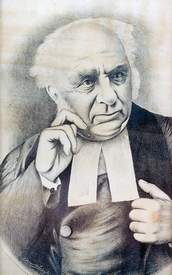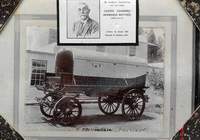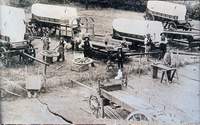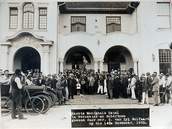Robertson, 150 years of history
Posted by Ayanda Khuzwayo on 20 September 2018 8:40 AM CAT


In 1728 a large tract of land which fell within the very large boundaries of Swellendam district was let to a Mr. P Joubert. The area soon attracted other migrant farmers who required grazing for their sheep and by 1800 many of them settled permanently on these pieces of land, which they now purchased outright from the Government. The names of the original farms are still much in evidence as districts, eg. Roodezant, Le Chasseur, Retreat, Noree, Goree, Vink Rivier, Willem Nels River, Klaasvoogds, Goudmyn, Vlolikheid and De Hoop Between 1728 and 1790, the particular farm Roodezand changed hands several times and in the 1840’s belonged to Johannes W van Zijl. Church services were held in his home when every three months Dr William Robertson, the Dutch Reformed Church Minister at Swellendam, visited the area. The town was named after him.

In 1852 it was decided that a town be established and Mr Van Zijl’s farm was purchased for the then enormous sum of 4 200 Pounds. The sale of plots at about 40 Pounds each and the laying of the cornerstone in 1853 of the D R C well-situated block in the centre of town was considered the birth date. The original church was pulled down in 1905 and a larger, more imposing Church was erected above the old foundations.
The erection of Churches of other denominations soon followed, Wesleyan Church being completed in 1859 and St Mary’s Anglican Church, designed by Sophie Grey, commenced in 1862. Soon traders and general dealer stores started to open up and several private schools were opened.
The year 1860 proved to be disastrous for the small town when a measles epidemic broke out followed by an enteric fever epidemic of alarming proportions, which swept through the entire village. Eighty-nine people died.
By 1872 Robertson boasted a well-stocked Public Library and by 1880 a branch of the Standard Bank of South Africa was opened.
During this period few farmers were wealthy but the district was already gaining a reputation for its fruit, wine and brandy, and with ostrich feathers becoming high fashion overseas, ostrich farming too developed. The main industry of the town itself was that of wagon building, and there were many wheelwrights, blacksmiths, carpenters, upholsterers and professional transport riders.


A New River Irrigation Scheme, which brought water by means of canals to the farms, meant that farms became more productive. In 1891 the Standard Bank Manager’s report could state that the income for the area was between 30 000 Pounds and 40 000 Pounds a year, making it extremely prosperous. Where before post had arrived in the town bi-weekly it was now delivered daily, because of the newly built Cape Central Railway, a privately owned line that ran between Worcester and Mossel Bay with Robertson its Head Office.
The Anglo Boer War of 1898 – 1902 saw the stationing in the town, of a British Garrison under the command of Lieutenant Cooper, and even before hostilities ceased, the wagon making industry was grinding to a halt, and the railways had taken over the transport of all goods.
The beginning of the First World War in 1914 saw many, for the size of the town, young men leaving their tranquil surroundings for the horrors of war at the Front Line in France, one at least never to return again.
The total collapse of the ostrich feather industry in 1915 ruined many farmers, some of whom never recovered and while Robertson had never depended entirely on ostriches as had Oudtshoorn and Ladismith, there is no denying that many were materially affected, and it is perhaps at this stage that wine farming started developing into the multi-million rand industry it is today. These, together with the racehorse breeding farms, which have proliferated in the last thirty years, certainly have added to the prosperity of the town and the district.


Now, at the beginning of the 21st century, Robertson is a clean, tree-lined town, well known for its roses and gardens, with all the amenities of a much larger town.
According to the latest figure, the town has 40 000 residents. This figure includes the outlying areas.

